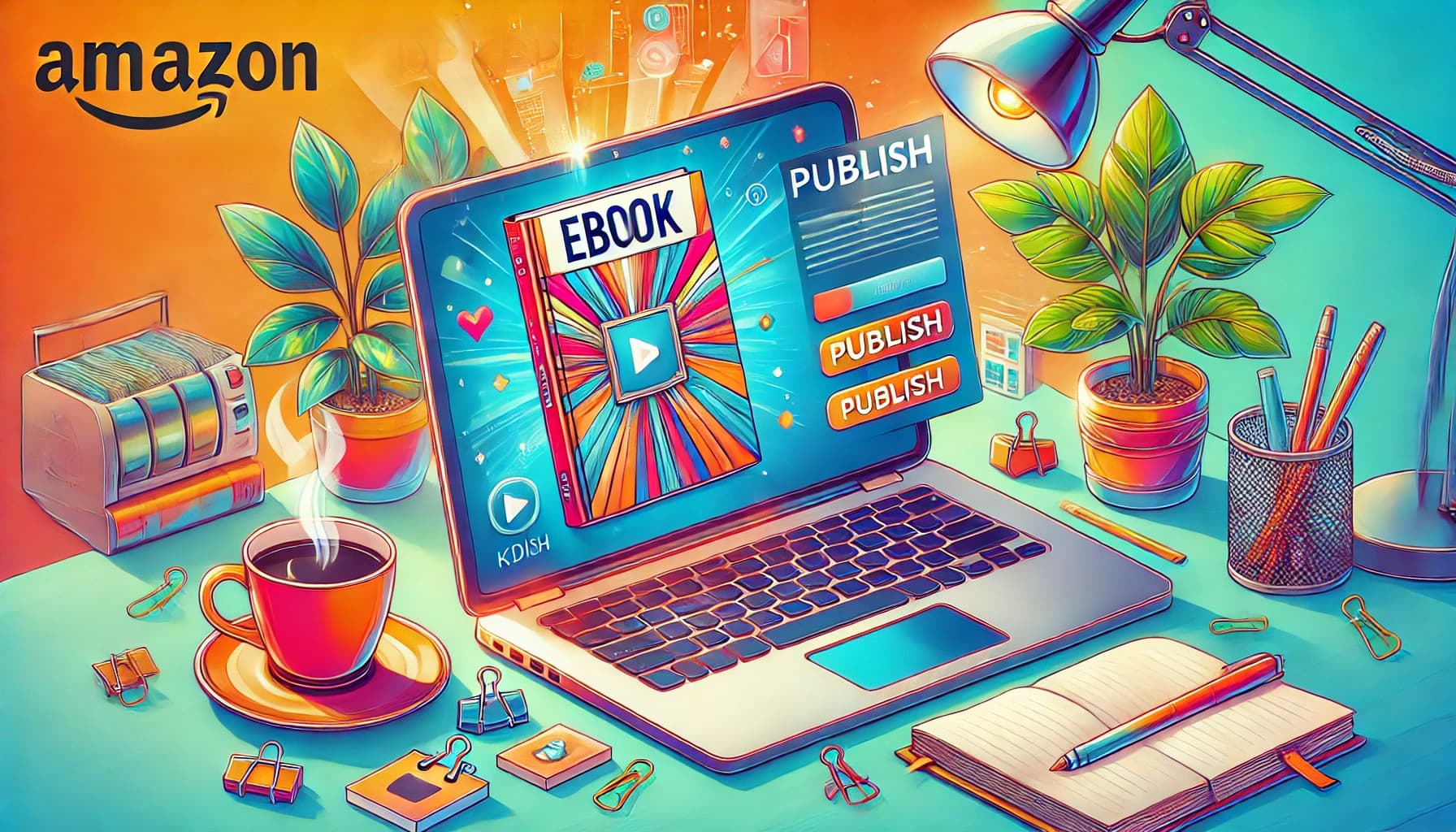Table of Contents
Many of us want to make the world a greener place, but it can be hard to know where to start, especially in publishing. Luckily, new trends are making it easier to stay eco-friendly while sharing knowledge. If you're curious about how publishers are going green in 2025, keep reading—there are some simple steps and innovative ideas that can help you support a more sustainable future.
By exploring these trends, you'll see how digital options, eco-friendly materials, and smarter processes are changing the game for publishers and readers alike. Staying ahead of these changes can help you make better choices and support greener practices in your own reading or work.
Let's look at what’s happening now and what the future holds for greener publishing practices in 2025.
Key Takeaways
Key Takeaways
- In 2025, digital publishing is the main way to be eco-friendly, cutting down on paper use and emissions. Switching to e-books and online journals helps save trees and reduces carbon footprint.
- When printing books, use eco-friendly materials like recycled paper and soy-based inks. Biodegradable packaging also makes physical copies greener.
- Print-on-demand reduces waste by printing only what’s needed, avoiding unsold books ending up in landfills.
- Getting certifications like FSC or PEFC shows your commitment to sustainability and builds trust with eco-conscious readers.
- Reducing waste in production, such as optimizing layouts and recycling scraps, helps lower environmental impact.
- Open access publishing limits physical copies and supports sustainability by sharing research online.
- Automation and AI boost efficiency, reduce errors, and help manage resources better, leading to less waste and lower emissions.
- Adopting broader green policies, like using renewable energy and sustainable commuting, strengthens a company's eco-commitment.
- Making supply chains greener by choosing local printers and responsible suppliers cuts emissions and supports responsible forestry.
- Marketing efforts that highlight eco-friendly practices can inspire readers to support sustainable publishing.
- Investing in new green tech, like biodegradable inks and energy-saving equipment, keeps publishers ahead in sustainability.
- Building a culture of sustainability involves staff training, setting clear goals, and encouraging green ideas and feedback.

Green Publishing Trends in 2025: Key Steps for a Sustainable Future
Green publishing is rapidly gaining momentum, driven by the need to reduce environmental impact while meeting the rising demand for eco-conscious content. If your goal is to make a positive difference and stay ahead of the curve, understanding the most impactful trends is essential.
Emphasizing Digital Publishing as the Main Trend
In 2025, digital publishing continues to be the top green trend. E-books, online journals, and interactive digital content significantly cut down on physical waste and energy consumption. Publishing digital instead of print can reduce the industry's reliance on over 32 million trees used annually for printing.
The environmental benefits of shifting to digital are clear. Producing a single physical book emits approximately 4,900 grams of CO2e, primarily from printing and shipping. Digital content produces almost zero emissions once published, making it a sustainable choice for both publishers and readers.
Major publishers are leaning into this, with some like Dutch startup Greenzeen linking their digital platforms to tree-planting efforts to reinforce their commitment. Transitioning to digital doesn’t mean sacrificing quality; it also offers opportunities for enhanced interactivity and content updates without additional paper use.
Using Eco-Friendly Materials for Print Products
While digital dominates, print will still have a place. The key is using eco-friendly materials like recycled paper, FSC-certified forest products, and soy-based inks. Implementing these materials can cut print operation emissions by up to 30%. That's a tangible step for publishers aiming to lower their carbon footprint while maintaining high-quality physical products.
Another move gaining popularity is biodegradable packaging and soy-based inks, which reduce the environmental impacts associated with traditional printing and packaging methods. Major publishers are increasingly showcasing eco-certifications such as FSC or PEFC, giving consumers confidence that their print purchases support sustainable forestry practices.
Adopting Print-on-Demand to Reduce Waste
Print-on-demand (POD) technology is transforming how books are produced, helping cut down on waste and excess inventory. Rather than printing hundreds of copies upfront, publishers print only what is ordered, significantly reducing the number of unsold books that often end up in landfills. This approach minimizes resource use and lowers emissions related to storage and transportation.
For authors and indie publishers, POD offers an accessible way to produce environmentally sensible books without large print runs. By integrating POD, publishers can respond quickly to market demand while keeping environmental impact in check.
Pursuing Carbon-Neutral Certifications and Eco-Labels
Certifications like being carbon-neutral or obtaining eco-labels such as FSC help demonstrate a publisher’s commitment to sustainability. Achieving these marks involves measuring, reducing, and offsetting emissions from printing, shipping, and office operations.
Major publishers, including Penguin Random House, now report their initiatives toward carbon-neutral publishing, incorporating energy-efficient practices, local printing to reduce shipping emissions, and investing in carbon offsets. Eco-labels act as a badge of trust that appeals to eco-conscious readers and investors alike.
Implementing Waste Reduction in Production Processes
Reaching zero waste isn't just a buzzword—it's a must for sustainable publishing. Streamlining production by optimizing layout to reduce paper waste, recycling scraps, and reusing materials play a crucial role. Using advanced pre-press techniques and digital proofing can further minimize errors, reducing costly reprints and waste.
Many companies also focus on energy-efficient machinery and cleaner production lines, contributing to lower emissions. Each small step adds up, helping the industry move towards a more circular and less wasteful approach.
Promoting Open Access and Environment-Focused Scientific Publishing
Open access publishing allows research and scientific information to be shared freely online, reducing the need for physical copies and overall printing. This model supports a sustainable future by decreasing the environmental costs associated with traditional journal publishing, such as paper, ink, and distribution.
Environmental science journals advocating for open access help accelerate awareness and action for sustainability, including the fight against climate change and resource conservation. Moving away from paywalled print journals satisfies both environmental and educational goals.
Utilizing Automation and AI to Improve Sustainability
Automation and AI tools can identify inefficiencies in the publishing process, optimize resource use, and minimize waste. For example, AI-powered editing and layout software reduce errors, saving paper and reprinting costs. Automated inventory management ensures print jobs are accurately matched to demand, preventing surplus and waste.
In addition, AI streamlines logistics through route optimization for shipping, which reduces carbon emissions. Embracing such technologies helps publishers run smarter and greener.
Adopting Green Practices in Publishing Companies
Beyond publishing methods, companies are adopting broader green policies. This includes switching to renewable energy sources, reducing office waste, and encouraging sustainable commuting. Conducting sustainability audits and setting clear environmental goals embed eco-consciousness into corporate culture.
Many publishers now participate in environmental initiatives, aiming for carbon neutrality and waste reduction. These practices not only lower a company's footprint but also resonate with consumers who prefer brands with a conscience.
Stay tuned for the second half of this article, where we’ll explore the real benefits of green publishing, how readers and authors can champion change, and what the future holds for sustainable publishing efforts in 2025 and beyond.

Integrating Sustainable Supply Chain Practices
For publishers, the supply chain is a major contributor to carbon emissions, so making it greener is key.
Partnering with printers and distributors committed to eco-friendly practices, such as local printing and green transportation, adds to your sustainability efforts.
Choosing suppliers with FSC or PEFC certifications ensures your materials come from responsibly managed forests, reducing deforestation impacts.
Implementing a transparent supply chain allows publishers to track and reduce the environmental footprint at every step.
Leveraging technology to plan optimized shipping routes cuts delivery-related emissions, and consolidating shipments can further minimize transportation waste.
Encouraging Sustainability Through Marketing and Consumer Engagement
Getting readers interested in your green initiatives can have a ripple effect.
Highlighting your eco-friendly efforts in marketing materials helps build a strong brand identity among eco-conscious consumers.
Creating content that educates readers about sustainability practices in publishing encourages them to support greener options.
Offering incentives, like discounts for recycling old books or promoting digital content over print, can motivate consumers to choose more sustainable options.
Engaging audiences via social media campaigns that focus on environmental topics inspires a community dedicated to positive change.
Investing in Sustainable Publishing Technologies and Innovations
New tech keeps pushing the boundaries of green publishing.
Investing in energy-efficient printing equipment and data centers reduces operational emissions.
Emerging innovations like biodegradable inks, digital watermarking for tracking sustainability, and eco-friendly coatings help make physical books more eco-friendly.
Adopting cloud-based publishing platforms reduces the need for physical servers, cutting down energy use.
Keeping an eye on startups and research labs can lead to early adoption of breakthrough sustainable tools before they hit the mainstream.
Building a Culture of Sustainability Within Publishing Teams
An eco-conscious workspace starts with everyone on board.
Training staff about sustainable practices, from waste sorting to energy conservation, promotes shared responsibility.
Encouraging ideas and feedback on green practices fosters an environment of continuous improvement.
Setting clear sustainability goals and tracking progress motivates teams to meet targets like waste reduction or energy savings.
Involving employees in corporate social responsibility (CSR) initiatives boosts morale and builds a greener company ethos.
FAQs
Digital publishing reduces paper use, lowers costs, and allows faster content updates. It offers broader reach to audiences, supports interactivity, and minimizes environmental impact, making it a key trend for sustainability in publishing.
Using eco-friendly materials reduces environmental harm, supports sustainable resource sourcing, and often involves recycling. It helps companies lower their carbon footprint while offering consumers greener options.
Print-on-demand produces copies only when ordered, cutting down excess inventory and waste. It allows publishers to meet demand efficiently while minimizing waste associated with traditional bulk printing.



